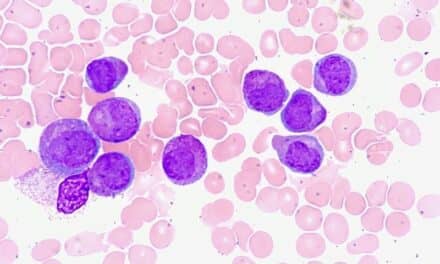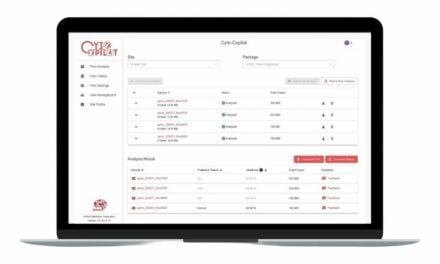The breakapart probe detects gene rearrangements in acute leukemia patients to identify candidates for menin inhibitor therapy.
The US Food and Drug Administration (FDA) has granted De Novo classification to OGT’s CytoCell KMT2A Breakapart FISH First Probe Kit PDx as a companion diagnostic for Syndax’s menin inhibitor REVUFORJ (revumenib), which treats relapsed or refractory acute leukemia with KMT2A gene translocations in patients one year and older.
The fluorescence in situ hybridization test detects rearrangements of the KMT2A region on chromosome 11 in bone marrow specimens from acute leukemia patients. More than 95% of patients with KMT2A-rearranged acute leukemia have a KMT2A translocation, which occurs when part of one chromosome breaks and fuses to a different chromosome.
“We are delighted that our CytoCell KMT2A Breakapart FISH Probe Kit PDx has received marketing authorization as a CDx for Revuforj,” says Dr Leila Luheshi, vice president of pharma partnering at OGT, in a release. “The development and subsequent authorization of this new CDx is an important demonstration of the skill and commitment of our clinical scientists and regulatory specialists to deliver safe and effective diagnostics for patients with one of the most devastating forms of leukemia.”
Class II Device Classification
The probe kit received Class II device classification rather than the more common Class III designation for companion diagnostics. Steve Chatters, executive vice president of regulatory and medical affairs at OGT, attributes this to the company’s experience in hematology diagnostics.
“Our strong foundation in hematology diagnostics has been a key factor in our success bringing the KMT2Ar CDx to market as a Class II device,” says Chatters in a release. “We have decades of experience developing regulated FISH products, gained from our prior development of IVDR-certified and FDA-cleared FISH probes.”
The test provides rapid turnaround for KMT2A rearrangement detection to help clinicians quickly identify patients eligible for REVUFORJ treatment.
Clinical Significance of KMT2A Rearrangements
KMT2A gene rearrangements occur commonly in acute leukemias, particularly in infant cases. The rearrangements appear in approximately 70% to 80% of infants with acute lymphoblastic leukemia and 5% to 10% of pediatric and adult ALL cases. They also occur in more than 50% of infants with acute myeloid leukemia (AML) and 10% of adolescents and 3% to 10% of adults with AML.
More than 90 partner genes have been identified, with the most common being AFF1, MLLT3, and MLLT1.
“Accurately identifying acute leukemia patients with KMT2Ar is a key factor in selecting appropriate therapeutic options for a group of patients who have traditionally had a very poor prognosis,” says Adrian Smith, chief executive officer of OGT, in a release.
The assay is indicated specifically for detecting KMT2A region rearrangements as a companion diagnostic to identify patients for REVUFORJ treatment. It is not intended for monitoring residual disease, and results should be interpreted by qualified pathologists or cytogeneticists.
OGT, a Sysmex Group company, develops clinical and diagnostic genomic solutions including CytoCell, CytoSure and SureSeq ranges of FISH, microarray, and next-generation sequencing products.
ID 68967162 © One Photo | Dreamstime.com





